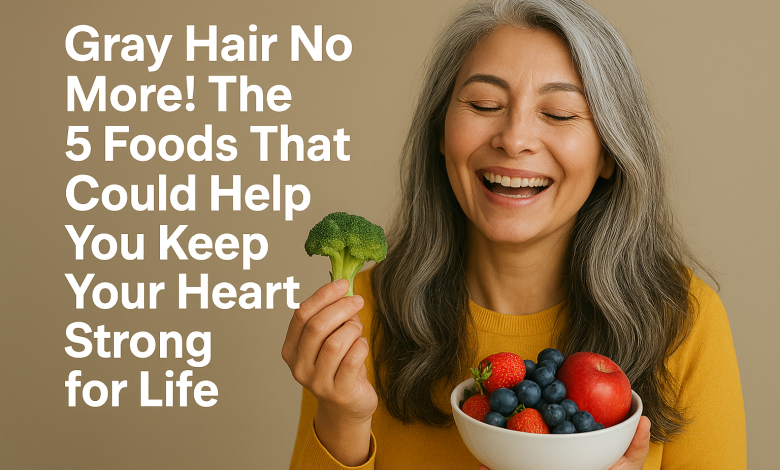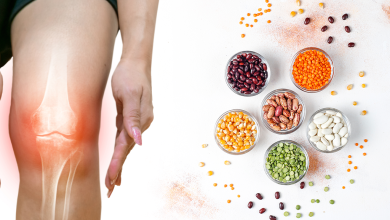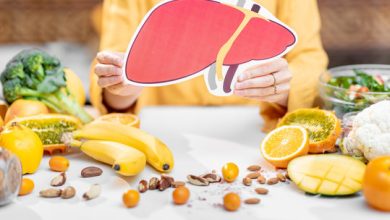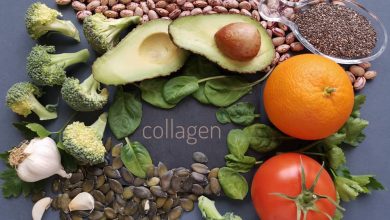Gray Hair No More! The 5 Foods That Could Help You Keep Your Youthful Shine

Have you ever looked in the mirror and noticed a few silvery strands creeping in, shining back at you as though to say, “Welcome to aging”? It’s a moment that can sting—especially when you feel vibrant, energetic, and far from ready to let go of youthfulness.
But here’s the hopeful twist: what if your diet, working quietly beneath the surface, might help slow or even reverse that graying process? While genetics, stress, and aging all play roles in how—and when—your hair turns gray, research suggests that certain nutrients can influence melanin production, oxidative stress, and cellular health in your hair follicles. In other words, nature gives you tools. It’s up to you whether you use them.
You’ll discover five powerful foods that may help bring back your youthful shine. You’ll also learn a simple, emotionally resonant narrative: your hair is like a garden. Feed it well, protect it from storms (oxidative damage, stress), and it can flourish in color again. Let’s walk together, step by step.
Your Hair, Your Story
Your hair tells a story—the chapters of youth, stress, adventure, joy, and strain. Gray hairs appear when that story shows signs of wear: when the pigment cells in your hair shaft (melanocytes) gradually lose their ability to produce color. Over time, hydrogen peroxide accumulates in hair follicles, damaging those pigment-producing cells. But before you resign yourself to inevitability, consider this: what you eat can nourish or starve those crucial cells.
1. Black Sesame Seeds – The Tiny Dark Powerhouse
Why It Matters
In traditional Chinese and Ayurvedic medicine, black sesame seeds have long been used as a remedy for graying hair. The rationale? They’re a dense source of antioxidants, healthy fats, magnesium, iron, and several micronutrients. Some compounds in black sesame aid in protecting cells from oxidative damage and supporting melanocyte vitality.
How to Use It
- Daily sprinkle: Add a teaspoon or two to your morning yogurt, oatmeal, or smoothie.
- Sesame paste: Blend black sesame seeds into a paste with a bit of honey and spread on toast or crackers.
- Sesame oil infusion: Warm a little sesame oil and gently massage it into your scalp to boost circulation (you can mix in essential oils if desired).
Emotional Touch
Imagine each tiny black seed as a guardian, standing watch over your hair’s pigment. Every sprinkle is a promise to yourself: you’re still fighting for your shine.
2. Eggs – The Whole-Body Hair Ally
Why It Matters
Eggs are a powerhouse of nutrition. They contain high-quality protein, biotin, B-vitamins (especially B12), selenium, and choline. Biotin is well-known for hair health, and deficiencies have been associated with hair loss and pigment decline.
How to Use It
- Boiled or poached eggs: A simple, whole-food breakfast.
- Egg yolk hair mask: Whisk an egg yolk with a teaspoon of olive oil, apply to hair, leave 15–20 minutes, then rinse.
- Vegetable scramble or omelet: Add spinach, onions, and mushrooms to boost additional vitamins and minerals.
Emotional Touch
When you crack open an egg, think of it as breaking through a barrier—letting in nourishment, color, and vitality. It’s a small ritual of care.
3. Spinach (and Leafy Greens) – Nature’s Deep Green Elixir
Why It Matters
Spinach, kale, collard greens—these leafy champions are loaded with folate, iron, vitamin C, and chlorophyll. Folate helps with DNA repair (important for cell longevity), iron supports oxygen delivery to follicles, and vitamin C aids in collagen formation in the scalp and fights free radicals.
How to Use It
- Smoothies: Blend spinach with berries, banana, and a spoon of black sesame for a color-supporting kick.
- Sautéed side dish: Cook greens lightly in olive oil, garlic, and a pinch of sea salt.
- Salad base: Use spinach as the foundation for hearty, color-rich salads.
Emotional Touch
Every green leaf you eat is another pledge to your inner ecosystem: you choose growth, vitality, and life. Let your hair mirror that choice.
4. Blueberries (and Other Blue / Purple Berries) – The Bright Shields Against Free Radicals
Why It Matters
Anthocyanins—the pigments that give blueberries, blackberries, and purple grapes their deep hue—are potent antioxidants. They help neutralize reactive oxygen species, the same molecules that can damage melanocytes and accelerate graying.
How to Use It
- Berry bowls: Combine blueberries, blackberries, and a dollop of Greek yogurt.
- Smoothies or chia puddings: Blend or layer berries for nutrient-dense breakfasts or snacks.
- Frozen berries: Use as a convenient antioxidant-packed topping for oatmeal or cereal.
Emotional Touch
Picture each blueberry as a shield, standing guard in your bloodstream, defending the cells that color your hair. With every bite, you’re reinforcing your fortress.
5. Walnuts (and Other Nuts / Seeds Rich in Copper) – The Mineral Bridge to Color
Why It Matters
Copper plays a critical role in melanin production. Without sufficient copper, the enzyme tyrosinase (which helps convert tyrosine into melanin) can falter. Walnuts, almonds, cashews, seeds like flax and pumpkin, and other nuts are good dietary sources of copper, healthy fats, and other trace minerals.
How to Use It
- Trail mix: Combine walnuts, pumpkin seeds, dried berries, and a dash of cinnamon.
- Nut butter swirl: Blend walnut butter into your smoothie or oatmeal.
- Crunch topping: Chop walnuts and sprinkle over salads, yoghurt, or cooked vegetables.
Emotional Touch
Think of your hair pigment as a flame. Copper is oxygen—it helps that flame burn steadily. When you nourish with walnuts and seeds, you’re breathing life back into that flame.
Building the Habit: The 5-Step Daily Sequence
To make these five foods work for you, consistency and sequence matter. Here’s a simple daily ritual you can follow—a step-by-step routine you can adopt to help your hair shine again.
| Time of Day | Action | Foods / Technique | Benefit |
| Morning (upon waking / breakfast) | Light hydration + seed boost | Warm water + lemon, then yogurt/granola with black sesame seeds | Flush toxins, support antioxidants |
| Breakfast proper | Protein + greens integration | Eggs + spinach scramble/omelet/smoothie | Delivers biotin, folate, iron, vitamins |
| Mid-morning snack | Antioxidant surge | A handful of blueberries (fresh or frozen) | Replenishes antioxidant defense |
| Lunch/snacks | Mineral support | Salad or snack with walnuts / mixed seeds | Supplies copper, healthy fats |
| Evening (pre-bed or after dinner) | Scalp ritual | Warm sesame oil massage (optionally mixed with black sesame infusion) | Boosts circulation, supports nutrient delivery overnight |
By structuring your day this way, you’re not just eating five foods. You’re telling your body: “I commit to restoring color, vitality, and strength.”
Beyond Food: The Supporting Cast That Elevates Your Results
Food alone isn’t a magic wand—but it’s a powerful co-star. Here are supporting habits to accelerate your journey:
Stress Management
Chronic stress triggers cortisol and oxidative stress, which can degrade melanocytes and speed graying. Practice daily techniques: deep breathing, meditation, yoga, journaling, nature walks—whatever calms your nervous system.
Adequate Sleep
Sleep is the time when your body repairs itself. Melanocytes may be vulnerable to damage if you don’t give them rest. Aim for 7–9 hours per night, in a dark, cool, quiet environment.
Gentle Hair Care
Avoid harsh chemicals, frequent bleaching, high-heat styling, and aggressive brushing. Choose sulfate-free, mild shampoos, and gently massage your scalp to stimulate blood flow.
Vitamin D & Sunlight Exposure
Vitamin D supports many bodily systems, including hair health. Spend safe time in sunlight (e.g., early morning or late afternoon) to synthesize D naturally.
Hydration & Detox
Water helps transport nutrients and flushes free radicals and toxins. Aim for at least 1.5–2 liters per day (or more if active), and support detox via green tea, leafy veggies, or mild herbal infusions (after ensuring they suit your body).
How Realistic Are These Claims?
Let’s be transparent. There are no clinically proven, guaranteed cures to reverse gray hair universally, because so much depends on genetics, age, and individual physiology. What these foods do is support what your body already does: create pigment, fight oxidative stress, repair cellular damage, and maintain nutrient supply.
Many people report slower graying, a darker tone returning to hair roots, and improved hair strength when sticking to nutrient-rich diets over months. But it’s a journey, not a one-time fix.
So your path becomes not about erasing every silver strand instantly, but about reclaiming control over your hair’s narrative. It’s knowing: even if your parents or grandparents grayed early, you can still nourish better, slow the pace, and enjoy stronger, more vibrant hair for longer.
Emotional Resonance: Why Your Hair Matters
Your hair is more than pigment. It is confidence, identity, and spirit. Those early grays sometimes feel like a betrayal—like your body is giving up on you. But when you turn to nature, when you choose to feed your body what it needs, you are saying:
- “I choose vitality.”
- “I will not surrender to age without a fight.”
- “My body deserves support, not resignation.”
Every time you eat spinach, crack an egg, pop a walnut, or stir black sesame into your smoothie, you reaffirm your belief in your own radiance. That emotional commitment helps you stick with the process, because deep change often requires consistency.
Sample 7-Day Meal Plan (with the 5 foods included)
Here’s a one-week illustration to help you start:
| Day | Breakfast | Mid-morning | Lunch | Afternoon Snack | Dinner | Nighttime |
| Mon | Egg & spinach omelet + whole-grain toast | Blueberries | Grilled chicken salad (with greens + walnuts) | Berry & walnut mix | Baked salmon + steamed greens | Warm milk + sesame oil scalp massage |
| Tue | Smoothie: spinach, banana, black sesame, yogurt | Blueberries | Lentil soup + side greens | Nut and seed trail mix | Stir-fry tofu + veggies (spinach, mushrooms) | Herbal tea, scalp massage |
| Wed | Boiled eggs + spinach salad | Blueberries | Quinoa bowl + roasted peppers + walnuts | Frozen berries | Chicken + green bean sauté | Warm sesame oil massage |
| Thu | Sesame-seed porridge with yogurt | Berries | Tuna salad (spinach, nuts) | Berry walnuts | Stirred spinach & legumes | Relaxation + scalp oil |
| Fri | Scrambled eggs + greens | Blueberries | Chickpea & walnut salad | Blueberry smoothie | Grilled fish + kale | Warm scalp oil massage |
| Sat | Green omelet + whole-grain toast | Berries | Turkey sandwich + spinach + nuts | Nut mix + berries | Veggie stir-fry + quinoa | Gentle scalp massage |
| Sun | Smoothie bowl: berries + spinach + sesame seeds | Berries | Mixed greens + grilled meat + walnut | Seed & berry mix | Roasted veggies + lentils | Quiet meditation + scalp care |
This is flexible; adjust proteins, vegetables, and flavors to your liking. The guiding principle: include at least one or two of the “5 foods” daily.
Tips to Stay Motivated & Track Progress
- Take before-and-after photos
At the start, take a clear photo of your hair (roots visible). After 3 months, take another under similar lighting. Track subtle changes in tone or density. - Journal daily feelings & energy
Write a brief note: “Today I felt more energized,” “Scalp feels healthier,” “Hair seems softer.” Emotional connection reinforces habit. - Set micro-goals
For example, within the first week, include black sesame in your breakfast every day. Or scalp massage 3 times in week one. - Buddy support
Share with a friend or partner. Exchange updates, motivate each other when habits lag. - Celebrate non-hair wins
Better digestion, more energy, improved mood—these often accompany nutrient-rich changes. Recognize them.
Possible Risks & Precautions
- Allergies & sensitivities
If you are allergic to eggs, nuts, seeds, or certain greens, avoid them. Seek alternative sources or supplements under supervision. - Over-supplementation
Too much copper, iron, or other minerals can be harmful. Don’t overdo one food to extremes. Aim for balance. - Medical conditions
If you have thyroid issues, hormonal imbalances, or autoimmune conditions, consult a healthcare provider. Gray hair in such cases might have deeper roots. - Realistic expectations
Some gray hairs may not revert fully. Your goal is improvement and support, not perfection.
Frequently Asked Questions (FAQ)
Q: Can I use supplements instead of these foods?
A: While supplements can help (like biotin, copper, B-complex), foods come with cofactors, fiber, and synergy not replicated in pills. Whole-food sources are safer and more balanced. Always consult your doctor before starting heavy supplementation.
Q: How long before I see any change?
A: Some people note subtle shifts in color or hair strength in 8–12 weeks. Deeper reversal of grays may take 6 months or more. Be patient and consistent.
Q: If my parents had grayed early, could diet still make a difference?
A: Yes. Genetics sets predisposition, not absolute fate. Nutritional support can slow or lessen gray progression even in genetically predisposed individuals.
Q: Can I dye my hair while trying this?
A: Yes — but choose gentle, low-chemical dyes (plant-based, ammonia-free). Be mindful that frequent chemical treatments can stress follicles and counter your efforts.
Final Thoughts: Reclaiming Your Shine, One Bite at a Time
Gray hair does not have to be a surrender—nor a signal that your vitality is gone. It’s a signal: time is passing, and your body needs care. That care begins with what you eat, how you reduce stress, how you rest, and how dedicated you are to your own well-being.
These five foods—black sesame seeds, eggs, spinach (and greens), blueberries, walnuts (and copper-rich nuts/seeds)—are your allies. They supply antioxidants, minerals, vitamins, and nourishment to help bolster pigment production, protect cells from oxidative damage, and help your scalp thrive.
But more than that: this journey is emotional. It’s about choosing to shine, believing in your body’s ability to heal, and telling your story with intention. When you put those black sesame seeds in your breakfast, whisper to yourself: “I am still vibrant. I am still colored. My hair will reflect my inner fire.”
Stay consistent. Track your progress. Be gentle with yourself. Celebrate small wins—stronger hair, more energy, improved mood. Over time, your hair may begin to reflect not just age, but the wisdom you’ve invested in it.
You may still find occasional silver strands—and that’s natural and beautiful too. But by embracing these habits, you reclaim agency over your hair’s story. You refuse to let time claim you passively. You decide: gray hair, no more—for now, and as long as you can.




